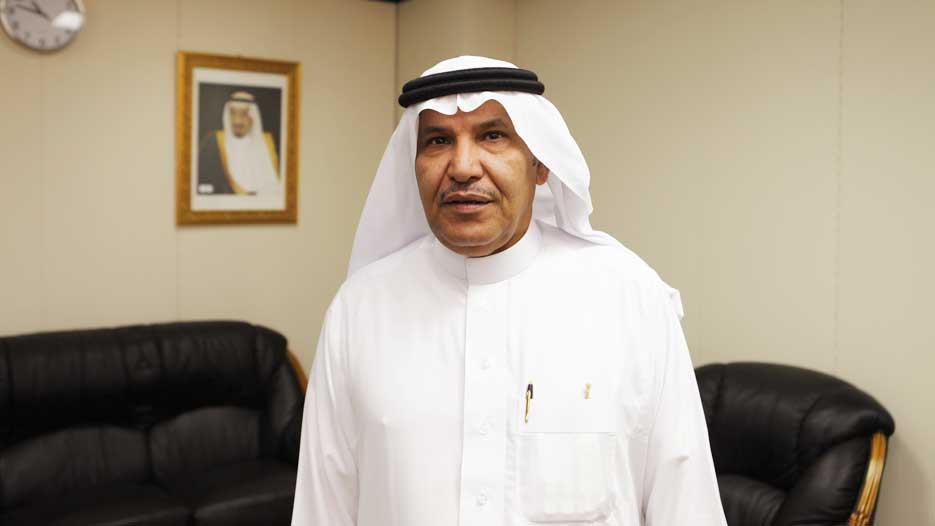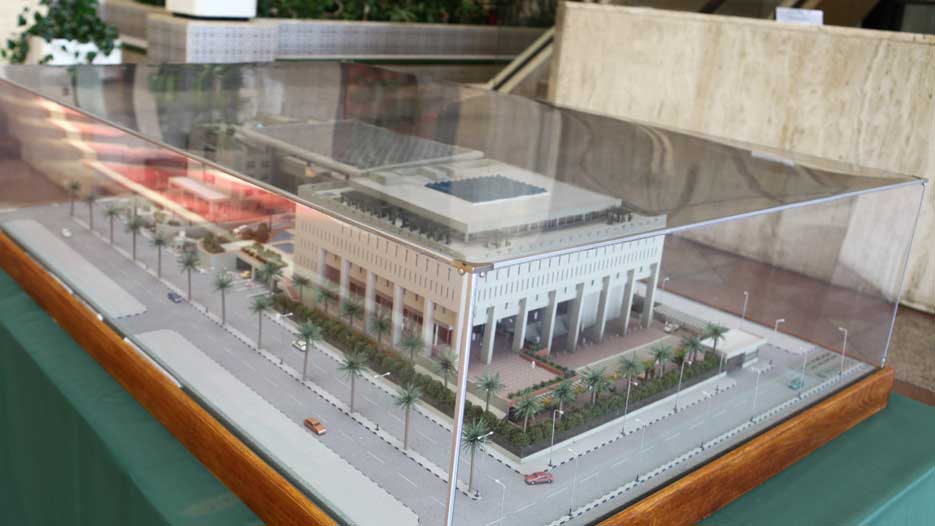Saudi Fund for Development: Implemented 500 Projects worth US$ 8bn
The Saudi Fund started in 1975. We are now dealing with more than 80 countries. So far, we have successfully implemented 500 projects. Our capital value is 30 billion Saudi Riyal, which is equivalent to 8 billion dollars.
Interview with Ahmed M. Al-Ghannam, Director General of Saudi Export Program

Please tell us about the Saudi Export Program and Saudi Fund for Development?
Saudi Fund for Development is the main channel for the Saudi government to promote development in the developing countries. We are offering concessional laws to the LDCs to help them to develop. We finance infrastructural projects like roads, dams and energy.
The Saudi Fund started in 1975. We are now dealing with more than 80 countries. So far, we have successfully implemented 500 projects. Our capital value is 30 billion Saudi Riyal, which is equivalent to 8 billion dollars. Within the Saudi Fund for Development, we have established the Saudi Export Program, where we promote Saudi Export. It is like one of the Exim banks or like export credit agencies like other countries. The main purpose of this program is to promote Saudi products in new markets and to help the Saudi government to diversify the national economy.
As you know Saudi Arabia is an oil-rich country. We are mainly producing crude oil. The government has succeeded in promoting these industries, especially the petroleum sector industries. We have downstream industries we are really proud of like Sabic and many others specializing in petrochemicals and many industries that rely on petrol and gas. Moreover we have other industries that are not related to the petroleum sector and we are very advanced in these areas. Most of these industries are highly qualified to set out and compete outside.
Can you tell us about the direct and indirect effects that the Fund has had on the development of Saudi Arabia, its economy? What was the impact? Has it been felt?
As I said, through the Saudi Export Program, we are providing finance and guarantees for Saudi exporters. It goes without saying that it has a very positive impact on export and growth of Saudi Arabia. Our exporters face strong competition outside, especially from those from countries with export banks and export credit agencies offering guarantees and financial facilities with favorable terms.
We are helping Saudi producers to go out and compete with other suppliers. I think so far, we have done a very remarkable job in helping the Saudi exporters. We have committed more than 37 billion Saudi Riyals. The export that we have promoted has reached more than 56 countries.
What are your biggest priorities for this year and the coming ones? What are your main challenges?
Our challenges are our objectives. We want to achieve all our objectives and to increase promotion of more products. We are happy to do this. We are trying our best to help exporters and the national economy to achieve the main objective of our 10th Developmental Plan, which is to help the government to diversify the economy.
More emphasis on non-petroleum-based industries will help us to contribute towards achieving the main objectives of our government. As you know, the world over exporting is a difficult task, especially when you are competing with very advanced countries. But we are really doing our best to help those entering new markets. Africa and Eastern Europe are huge markets. They have the potential. I always associate potential with growth. Countries in Africa and in Eastern Europe have tremendous potential for growth, which means an increase in demand. So, they need ever more products. This is what we are trying to focus on.
There are many challenges. Our competitors doing the same things and we are doing our best to be equally competitive. We are not shying away from competing. I believe that competition has a positive impact on the productivity. The more you can compete the more focused you are on enhancing the quality of your products and on increasing the productivity of your industries. This is a positive and healthy sign for competition.
What are the most important markets for Saudi Arabia? For Saudi exports?
As I mentioned, we are not limited to any countries. We are trying to reach Latin America, Eastern Europe. But I think Africa and Eastern Europe are very big potential markets. We are trying our best to focus on these two regions. I am sure that if we can compete well there, it will give a lot of stimulus to our export and our economy Inshallah.

What are the industries that are the most important drivers of Saudi exports?
Saudi Arabia a petroleum-based country and petrochemical industries help us to have an upper hand over others. Saudi Arabia has the cheapest energy costs in the world. That is why we can successfully compete with other producers. But we are not going to limit ourselves to petrochemicals alone. That is why we are helping other products to also be more competitive. We have good AC companies, good irrigation system companies. They are competing. Even though they are partially dependent on petrochemicals, but it has helped our economy to diversify.
As I said there are many challenges, especially because Shell Oil is an emerging company and offers stiff competition. But this depends on the cost. At least for the next 5 to 7 years, Shell Gas cannot compete with the conventional crude oil.
Because of the high cost of Shell Oil. We hear that Shell oil cannot be viable economically if the price of oil goes beyond $45 or $50. Whereas Saudi crude oil can sell oil at even lower than this. I think it depends on the range of competitors. I think caution should be observed in terms of the rate. This is the advantage of the Saudi economy.
On a long term basis, companies charging high rates cannot compete and sustain. Companies with a history of low production costs will sustain and win. I am sure there will be a lot of hiccups in the petrochemical industry, but the oil companies will sustain on a long-term basis. Hopefully, these hiccups will help our economy to be more rational in terms of production and cost of production and in terms of utilizing oil. Rather than exporting crude oil, we can focus more on downstream industries that will capitalize on the value added from this product. This will help our national economy in employing capital, labor and natural resources. I am sure the government is planning is reach this objective.
One of your important missions is to provide export financing, credit lines etc. You travel extensively and explain this to SMEs. Small and Medium Enterprises are the backbone of any modern economy. They employ 80% of the people. They contribute to the economy. Can you tell us more about the SMEs in Saudi Arabia as opposed to SMEs in other countries? How different are they? Do they fully grasp that they can be offered a lot of help from the government?
I always believe that SMEs are and should be the driving force of any nation. If you compare the contribution of the SMEs between the developed and the developing countries, you will see the difference. In developed countries like United States and in some emerging economies like Turkey and India and China, you see the contribution of SMEs towards the GDP is very high, some even exceed over 80%. Where as in developing countries, it is very slow. In the last 4 to 5 years, Saudi government is focusing more on developing SMEs. We have many programs that offer finance and guarantees. We, at the Saudi Export Program, have paid attention to this important fact. One of the conditions in our terms is that we can export finance for nearly 100, 000 dollars. This means that we can really help those small exporters. So, we are reaching out to offer the benefit of our facilities to as many SMEs as possible. We also help them through other procedures in the Saudi Export program. We have fast-track procedures that help the SMEs to finish their application in the Saudi Export Program within a week to 10 days. This really goes in line with the government objective in focusing on the SMEs, because we believe that they have a major role to play in the economy. Also, they are one of the main sectors that can absorb the labor force in Saudi Arabia.